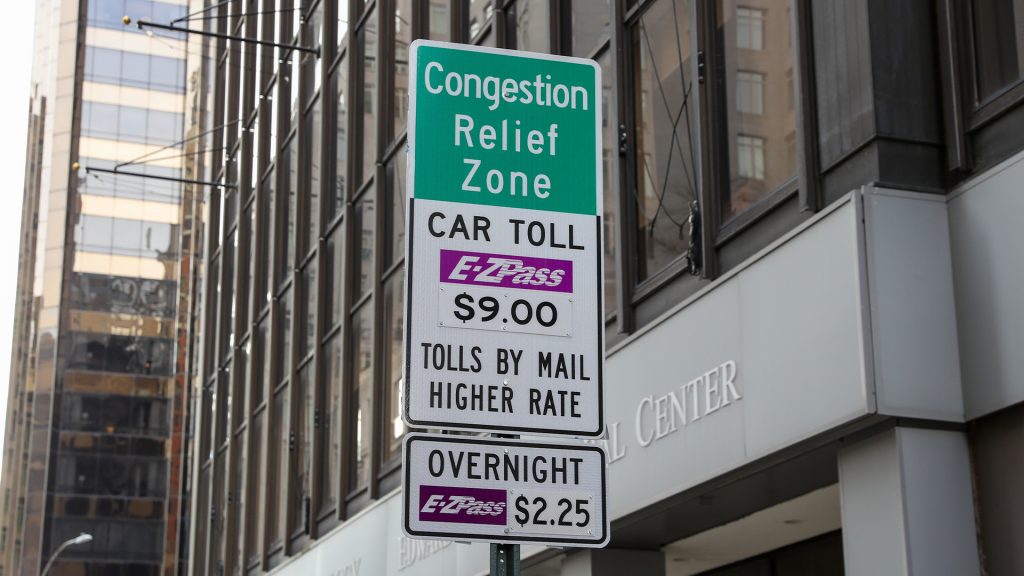NYC continues congestion pricing toll despite federal deadline to suspend it
Ella Greene April 21, 2025 0
- New York City has kept its congestion pricing program active despite a missed federal deadline to suspend it. This marks the second time Gov. Kathy Hochul and the Metropolitan Transportation Authority have defied a White House directive to end the toll.
- State officials defend the tolls — $9 for most vehicles entering Manhattan below 60th Street during peak hours — noting that the program reduced traffic, boosted business, raised $48.6 million in January alone and helped fund transit improvements.
- The federal government, which reversed its earlier approval in February, argues the tolls are illegal and harmful to working-class drivers. It warns that failure to suspend the program by May 21 could result in loss of federal funding and halted project approvals.
Full Story
The federal deadline for New York City to halt its congestion pricing program passed on April 20, but the tolling system remains in place. This marks the second instance in which New York Gov. Kathy Hochul and the Metropolitan Transportation Authority (MTA) have not complied with a White House directive to suspend the initiative.
Why does New York support congestion pricing?
In a statement, a spokesperson for Hochul defended the tolls, saying, “The program is working. Traffic is down, business is up and the cameras are staying on.”
The plan charges most cars entering Manhattan below 60th Street a peak fee of $9 from 5 a.m. to 9 p.m. on weekdays and 9 a.m. to 9 p.m. on weekends, generating $48.6 million in January alone. State law mandates spending 80% of those funds on improvements to the city’s bus and subway systems.
Why does the federal government oppose congestion pricing?
The U.S. Department of Transportation has expressed opposition to the state’s decision. On Monday, April 21, Transportation Secretary Sean Duffy issued a letter to Hochul warning of “serious consequences” if the program is not suspended or if legal justification for its continuation is not provided by May 21.
The letter indicated that failure to comply could result in the loss of federal funding and the withholding of approvals for state transportation projects.
“New York’s elitist cordon pricing scheme is illegal, a form of class warfare that targets working Americans, and unfair to the driving public whose tax dollars have already paid for these roads,” the Transportation Department said in a social media post.
How did this dispute over the toll begin?
The argument over the tolling system began in February when federal officials rescinded their prior approval of the congestion pricing plan, citing concerns that it places an undue burden on working-class Americans.
In response to the federal action, the MTA filed a lawsuit challenging the reversal in federal court. The agency has stated that the tolls will remain in place while the case is pending, with a court decision potentially coming in late October 2024.
What happens next?
Separately, a series of legal challenges brought by consumer advocacy groups against the tolling system were dismissed in federal court last week. However, these organizations have vowed to refile their lawsuits.
Meanwhile, the Department of Transportation has stated it will continue to oppose what it describes as an “unlawful tax on hardworking Americans.”
Related Stories
Ella Rae Greene, Editor In Chief
Ella Greene
Ella and the staff at Clear Media Project (CMP) curate these articles.
Unless otherwise noted CMP does not write these articles.
The views, thoughts, and opinions expressed in the articles published on this blog belong solely to the original authors and do not necessarily reflect the views of the blog owner. The blog owner does not claim ownership of the content shared by contributors and is not responsible for any inaccuracies, errors, or omissions.
All rights and credits goes to its rightful owners. No Copyright Infringement is intended. If you believe any content infringes on your rights, please contact us for review and potential removal.





